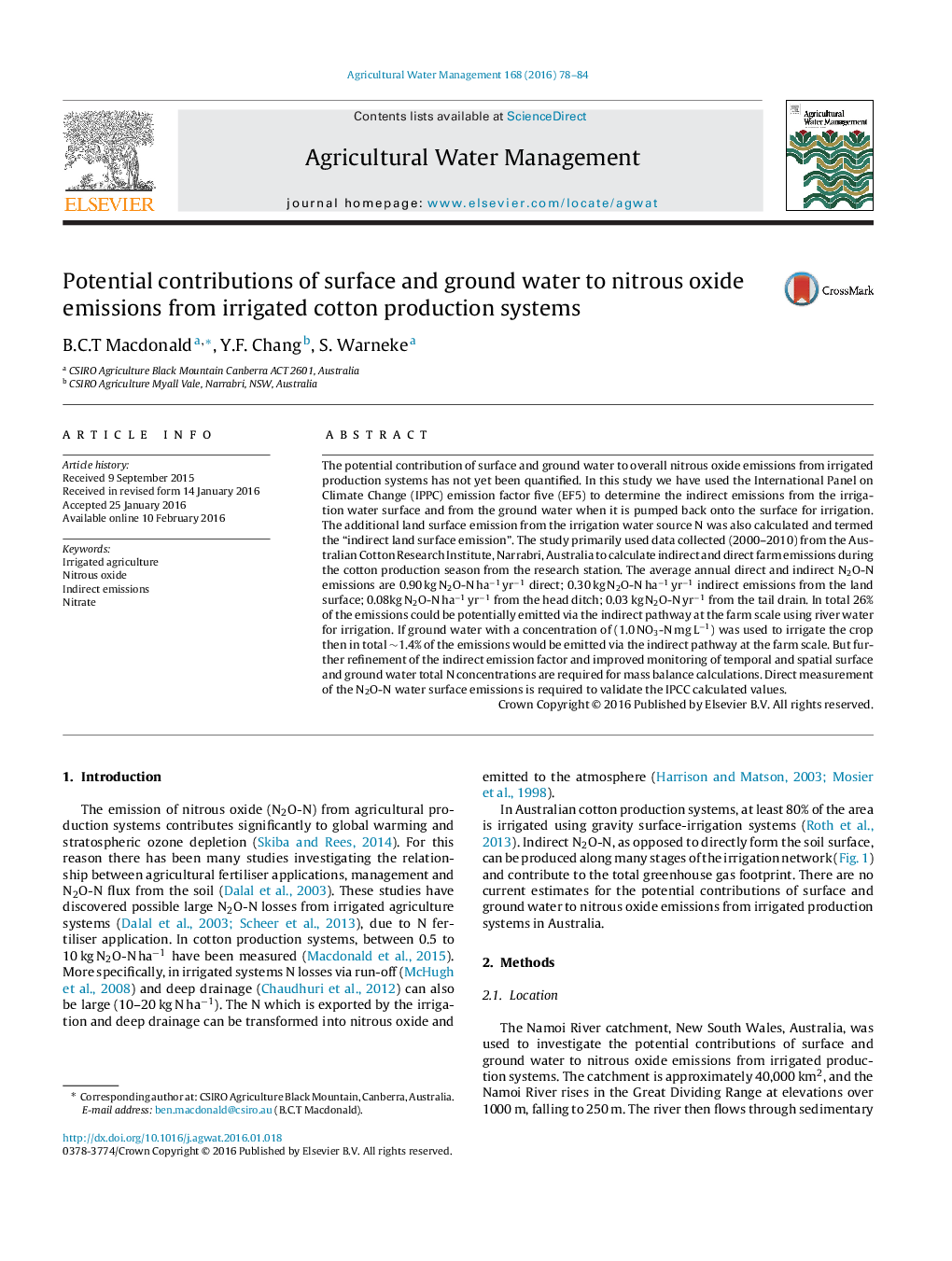| کد مقاله | کد نشریه | سال انتشار | مقاله انگلیسی | نسخه تمام متن |
|---|---|---|---|---|
| 6363563 | 1622912 | 2016 | 7 صفحه PDF | دانلود رایگان |
- Indirect N2O-N emissions could be a significant fraction of the total N2O-N.
- Indirect emissions need further field quantification.
- Minimising off-field NO3-N flux is the key to reducing indirect emissions in irrigated systems.
The potential contribution of surface and ground water to overall nitrous oxide emissions from irrigated production systems has not yet been quantified. In this study we have used the International Panel on Climate Change (IPPC) emission factor five (EF5) to determine the indirect emissions from the irrigation water surface and from the ground water when it is pumped back onto the surface for irrigation. The additional land surface emission from the irrigation water source N was also calculated and termed the “indirect land surface emission”. The study primarily used data collected (2000-2010) from the Australian Cotton Research Institute, Narrabri, Australia to calculate indirect and direct farm emissions during the cotton production season from the research station. The average annual direct and indirect N2O-N emissions are 0.90 kg N2O-N haâ1 yrâ1 direct; 0.30 kg N2O-N haâ1 yrâ1 indirect emissions from the land surface; 0.08kg N2O-N haâ1 yrâ1 from the head ditch; 0.03 kg N2O-N yrâ1 from the tail drain. In total 26% of the emissions could be potentially emitted via the indirect pathway at the farm scale using river water for irrigation. If ground water with a concentration of (1.0 NO3-N mg Lâ1) was used to irrigate the crop then in total â¼1.4% of the emissions would be emitted via the indirect pathway at the farm scale. But further refinement of the indirect emission factor and improved monitoring of temporal and spatial surface and ground water total N concentrations are required for mass balance calculations. Direct measurement of the N2O-N water surface emissions is required to validate the IPCC calculated values.
Journal: Agricultural Water Management - Volume 168, April 2016, Pages 78-84
